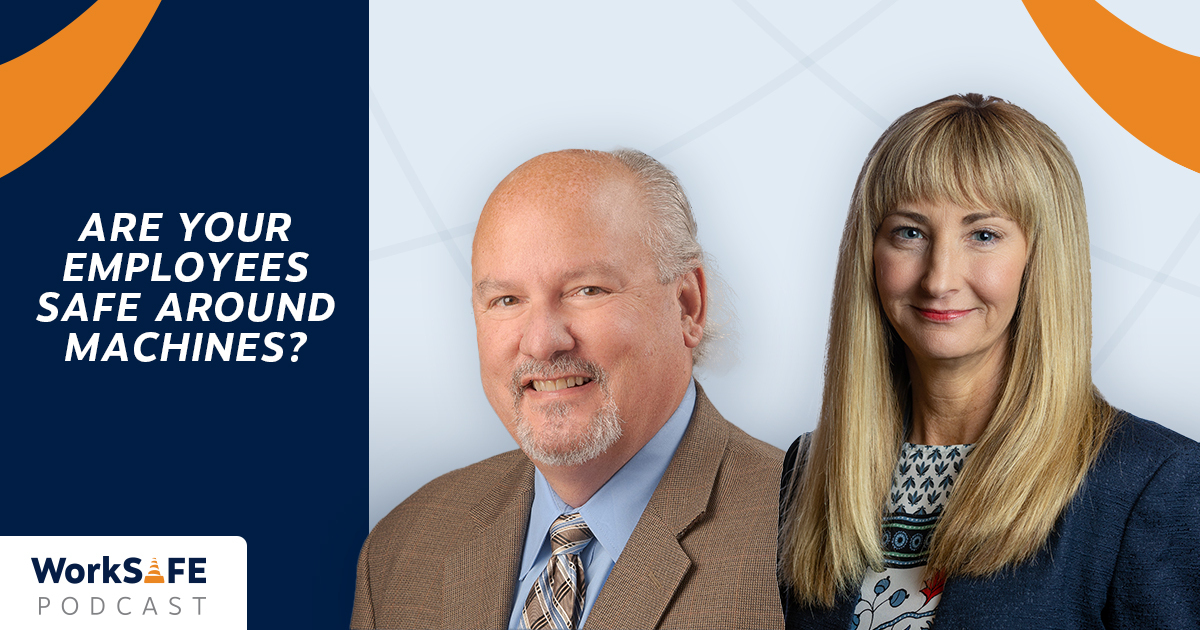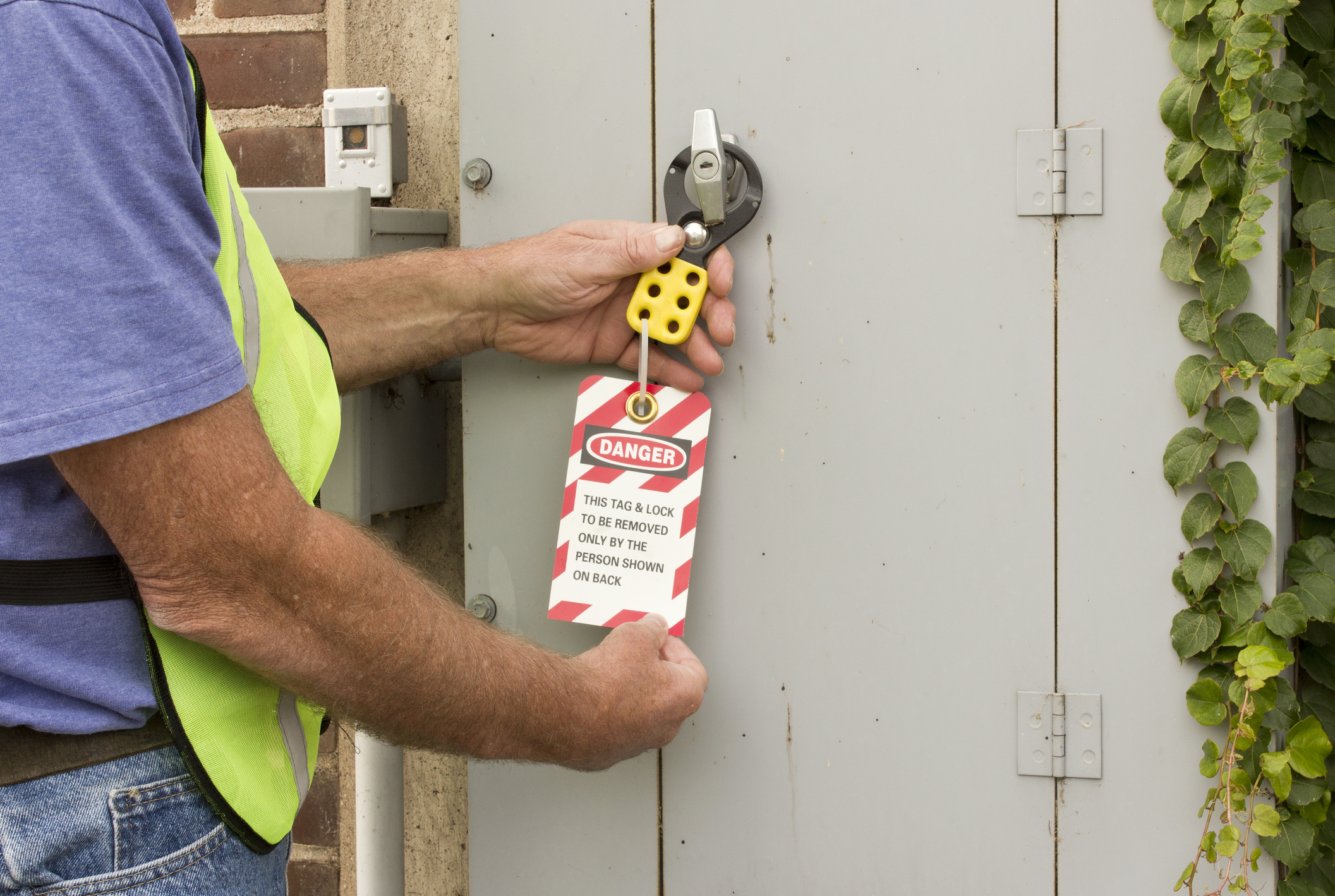For Media Inquiries
Contact Revee White, Director of Marketing and Communications at rwhite1@mem-ins.com or 573.499.4190.
Machines are an essential part of work in many industries. They lift heavy loads, convey materials, and add power to the tasks that help get a job done. But this energized equipment holds unseen hazards. It only takes one moment to change a life. Machine safety practices, such as a lockout/tagout (LOTO) program, can be the difference between an efficient workday and a catastrophic incident.
On this episode of the WorkSAFE Podcast, we are joined by Rod Harvey. He is the Director of Industrial Hygiene and Field Operations with RHP Risk Management. Harvey has more than 35 years of experience in environmental health and safety. He consults with public and private sector clients to find solutions that improve work environments.
First, we’ll talk about the most common machine safety programs. Then, we’ll discuss the risks present without machine safety measures. Finally, we’ll share the best practices employers can implement today.
Listen to this episode of the WorkSAFE Podcast or read the show notes below.
Machine safety programs: The basics
Machines have transformed the way work is done every day. The Industrial Revolution, a rapid wave of change spanning nearly 80 years globally, brought power and production to the forefront. People began using everything from natural gas to steam to electricity to power their lives and work. However, this early development had an exacting cost. Catastrophic injuries, such as amputations, burns, and crush incidents, revealed that machines could take just as much as they gave.
Lockout/tagout
Today, labor standards focus on protecting employees from the equipment they work with. The Occupational Safety and Health Administration (OSHA) points employers to the Control of Hazardous Energy Standards. It is more popularly known as lockout/tagout (LOTO). These guidelines safeguard employees during machine maintenance, repair, or inspection. A machine jumping to life during any of these processes is a serious risk to an employee. Lockout/tagout uses two different safety controls:
- Locks. A physical lock or barrier is placed around a machine while it undergoes work.
- Tags. Hanging tags in bright colors and patterns are applied to valves, switches, or other essential controls.
Machine guarding
Safety during day-to-day machine operations is covered under a different standard called machine guarding. These devices are physically installed on machines. They protect employees from hazardous areas on moving equipment. For example, spinning blades, pinch points, or ejection areas where flying chips or burning sparks might exit. Modern machine guards can even include technology like pullback devices that guide a machinist’s movements and mats that detect the presence of an individual.
Using machines means encountering safety hazards
“Lockout/tagout and machine guarding are both intended to protect workers while operating and working around machinery,” Harvey explained. He highlights that most companies have a dedicated team to maintain equipment. But this doesn’t mean the job is easy or comes as second nature, even for experienced employees. “Citations of both standards are frequently atop OSHA’s most cited list.”
As vital as lockout/tagout and machine guarding are for a workplace, they are often underused. Standards in the United States require equipment manufacturers to install guards before shipment. However, machines made overseas aren’t subject to these rules.
A single moment can change a life
OSHA finds that inadequate and unguarded machines cause an average of 18,000 amputations, lacerations, crush injuries, and abrasions yearly. Some operators avoid them because of issues they create. For instance, making equipment more difficult to use or causing ergonomic problems. Shortcuts may develop over time. And although the shortcut may be used successfully by employees for months – even years – it only takes one unsuccessful occasion to change a life.
Among the most common injuries Harvey sees are amputations of the fingers, hands, and arms. Conveyor belts are a common culprit. “It’s amazing how quickly that will grab somebody and pull them into the machinery, certainly before anybody can react and undo it,” he shared.
One of the biggest hazards he’s identified is servicing live machines. Some equipment must be turned on while in repair. For example, a punch press may need to be functioning to replace the die. And while this may be a necessary part of the process, it doesn’t mean that safety processes should be disregarded entirely.
Machine safety best practices to implement today
The perfect time to make safety improvements to a workplace is here and now. Harvey recommends a few best practices for employers. First, each machine should have a written lockout/tagout process. It should identify the following:
- All sources of energy on the machine.
- All buttons and switches that affect the machine’s functionality, including starting and stopping it.
- Processes that ensure employees avoid getting their hands caught in the equipment.
An expert third party should review the process. This is important for businesses big and small. A second set of eyes can see things employers can’t. Weekly inspections should be completed either by a safety inspector or committee.
It is also vital for employers to categorize their employees. OSHA addresses two different groups of employees in its lockout/tagout standard: authorized users and unauthorized users. An authorized user has been trained to install locks and tags on equipment. Unauthorized users don’t maintain locks or tags but should know about machine safety.
“They still have to have an awareness level of what the purpose of lockout/tagout is,” Harvey explained. “The main thing is when they see a lock or a tag, to know that it can’t be removed and that equipment needs to be isolated at all times during the operation.”
Employee safety must be a priority for employers. A machine can present the opportunity for productivity and severe injury in equal measure. Evaluate your workplace and safety plans today.
For free safety posters, sample policies, and safety toolkits, visit our Resource Library. Then, take advantage of our Lockout/Tagout Starter Kit to jumpstart your machine safety efforts.


